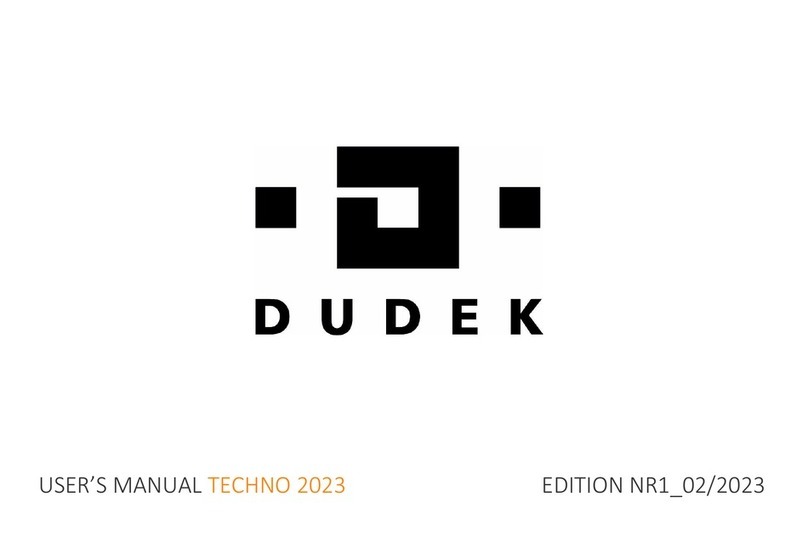Congratulations!
Thank you for choosing the Techno harness. We ha e done our best to present you with a highest quality product,
fulfilling all safety requirements and offering maximum functionality. Please read this manual carefully before using the
harness for the first time. This will help you utilize all features of the Disco, thus maximizing comfort and fun factor of
each flight. We wish you a lot of safe and enjoyable airtime!
Contents
1. Safety 2
2. Description 2
3. Speedbar 3
4. Rescue chute installation 3
5. Frontcontainer installation 8
6. The pod 11
7. Harness/paraglider connection 13
8. Harness/tow connection 13
9. Straps adjustment 13
10. Pockets 15
11. impact pad 16
12. Before flight 16
13. Rescue chute installation 16
14. Landing 16
15. Waterlanding 16
16. Tandem flying 17
17. Cleaning and storage 17
18. Operation and repairs 17
19. Technical data 17
1. Safety
Paragliding is a potentially dangerous sport. When flying a paraglider you ha e to accept risks of injury and/or e en
death. Incompetent or improper use of the harness may add to those risks. In case of any doubts please ask your
dealer or manufacturer.
Dudek Paragliders do not bear any responsibility for damages or injuries resulting from paragliding
activities.
2. Description
Techno is a light harness with a pod. Due to light and durable materials of best quality it weighs just 3,5 kg in M size.
It is a perfect proposition for cross-country and bi ouac pilots. Small weight and dimensions make long treks on foot
easier. Reduced, elastic seat plate used in Techno harness is an intermediate solution between a "hammock" and
traditional, rigid seat plate harnesses. Comfortable back support and new, ergonomic seating present you with
maximum snugness during long flight hours. Large adjustment range make sure e ery single pilot will be able to find
his optimum. Redesigned strap scheme brings great stability and significantly reduces danger of launching with
unclipped leg/chest straps. Certified, 15 cm thick airfoam impact pad offers ery good protection of the pilot's spine.
The pod Integrated rescue chute container is located on the back, behind the impact pad. Release handle is fixed in
easily accessible area on the right side of the harness. There is an additional cache under seat plate. The Disco
features features easily replaceable, ball-bearing Duroll pulleys in order to impro e the speedsystem operation. The
Disco is capable of flying with a footrest, a ailable as option. Its four-point adjustment of its length allows for any
footrest inclination as well. The rescue chute is located in a frontcontainer. When the rescue chute is acti ated, the
pod opens automatically too. There is a ballast pocket under the seat plate. The harness features easily replaceable,
ball-bearing Duroll pulleys for better speedsystem operation.




























